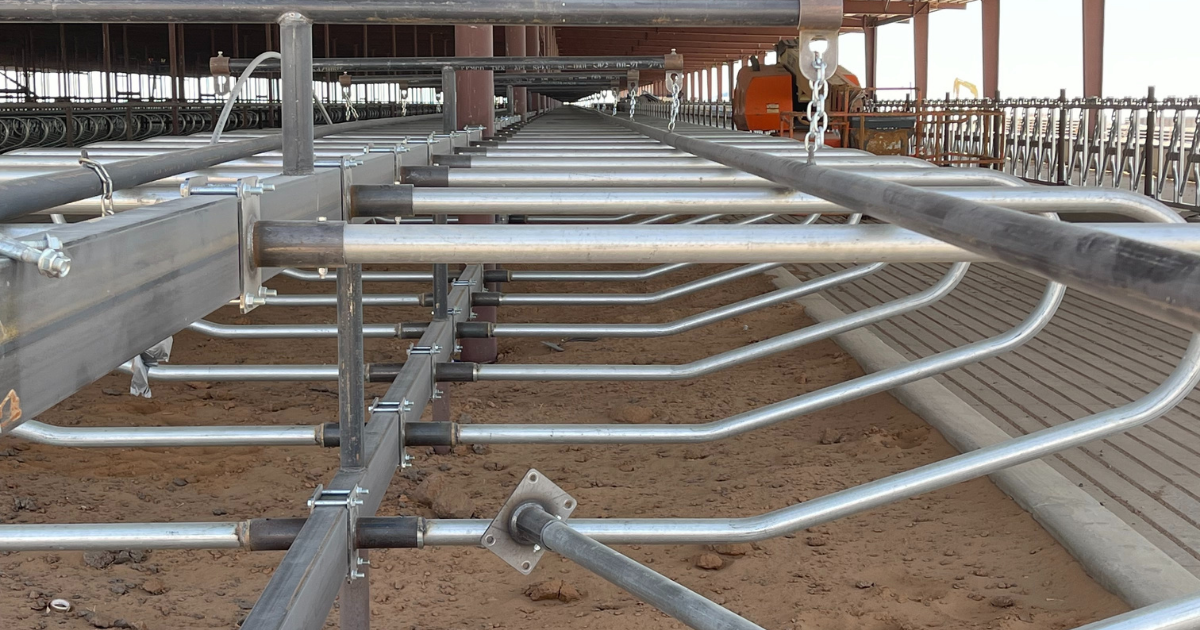
5.17.22
Building Sustainable Dairies
Building sustainable dairies is not a futuristic dream. In fact, the US Dairy Innovation Center pledges to achieve bold sustainability goals by 2050 for all U.S. Dairies. These goals include greenhouse gas neutrality, improved water quality, and reduced water usage. As the global population climbs, so does the need for the high-quality protein found in beef and dairy products. As a result, dairy farms across the United States incorporate sustainability practices by taking a direct approach to reducing, reusing, and recycling using cutting-edge techniques.
An added benefit of sustainable dairy design is that the dairy produces more than just milk as a commodity. Manure, wastewater for crops, and natural gas are potential by-products that can be sold, used by the dairy, or shared with neighbors.
The Power of Poop
All creatures produce waste, but a sustainable dairy puts that waste to work. Cow manure is an excellent organic fertilizer. Effective manure management includes a manure stacking pad where waste can be dried and easily transported to nearby crops.
Modern dairy design prioritizes waste management through vacuum or flush style barns. Vacuum-style barns have a specific machine that clears out bedding areas to remove the waste. The waste is then transferred over to nearby manure stacking pads to dry.
Cattle comfort and cleanliness are vital in the dairy business. Flush barns are another way to move and reuse cattle waste. Water is pumped through the cow lanes in a flush barn to move the waste out of the bedding areas toward a manure separator. The manure is pulled from the water in a flat basin, and the water continues toward the lagoon.
Basins have very little grade and allow the manure to dry out. After drying, manure moves to the manure stacking pads. It’s essential to pull out as much of the solids as possible before moving the water to the lagoon as basins are easier to clean, and the waste can be repurposed as crop fertilizer.
Never Waste Water
Sustainable dairies use water from flush-style barns to separate sand from manure. The clean sand for bedding keeps cows more comfortable and productive.
Water used to flush manure is moved through manure basins into lagoons where it can be recycled for additional flushing or used as nutrient-rich water for nearby crops. Dairy farmers who do not grow crops or silage for cattle feed form mutually-beneficial partnerships with local farmers to sell the nutrient-rich wastewater and manure.
Cattle Conversion for Sustainability
Dairy sustainability comes naturally to cattle as they are nature’s recyclers. Cattle eat a carefully monitored diet of grains and silage that maximizes milk production. Turning crops into milk and beef production is their greatest strength, but a new wave of conversion is taking place on dairy farms throughout the U.S.
Lagoons often produce a significant amount of biogas. New digester technology has many dairy farmers converting this biogas into natural gas that can be used or sold as a renewable fuel source. Odor is reduced, and the gas produced off the lagoons is cleaned and pipelined into a natural gas facility where it can be sold as a commodity.
CONCLUSION
With proper planning, dairies can become profitable and sustainable for years to come. MJE has worked to design and build some of the largest dairies in the world. MJE has experience converting waste into valuable commodities for both profitability gains and for overall dairy sustainability.
If you’re looking to incorporate dairy sustainability into your expansion or new build, let’s start the planning together!